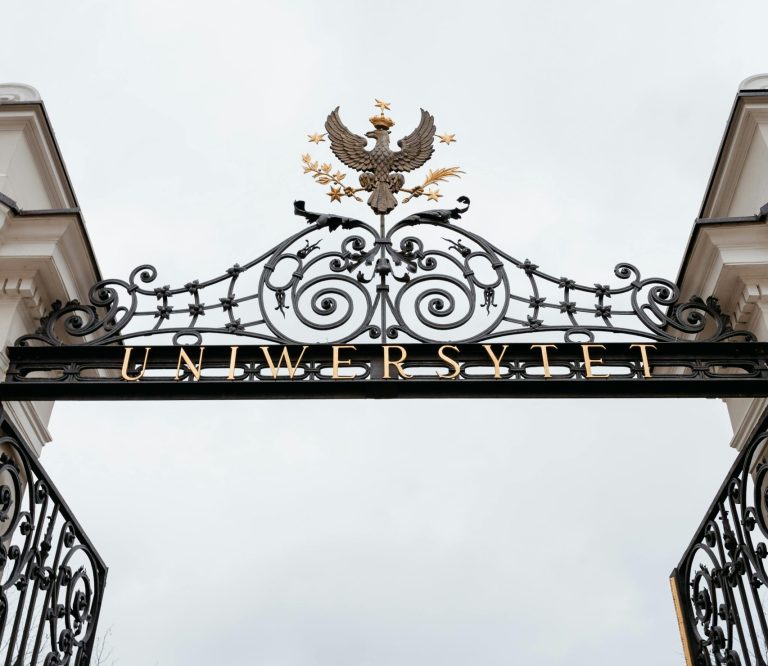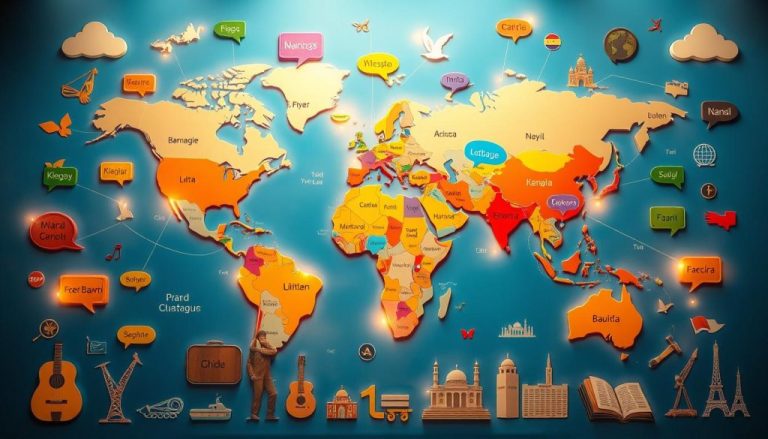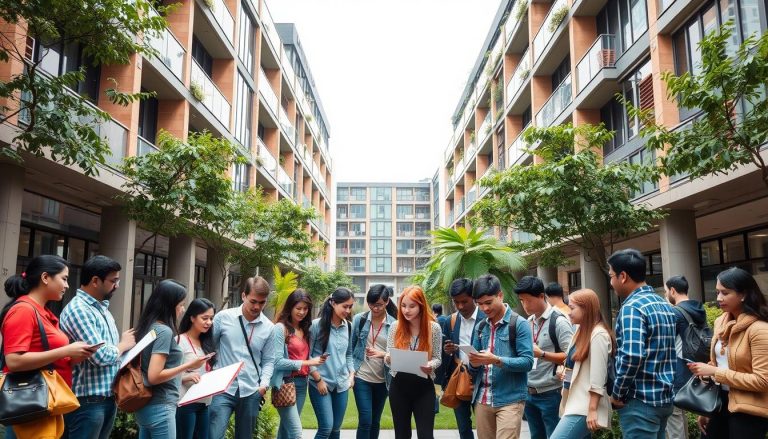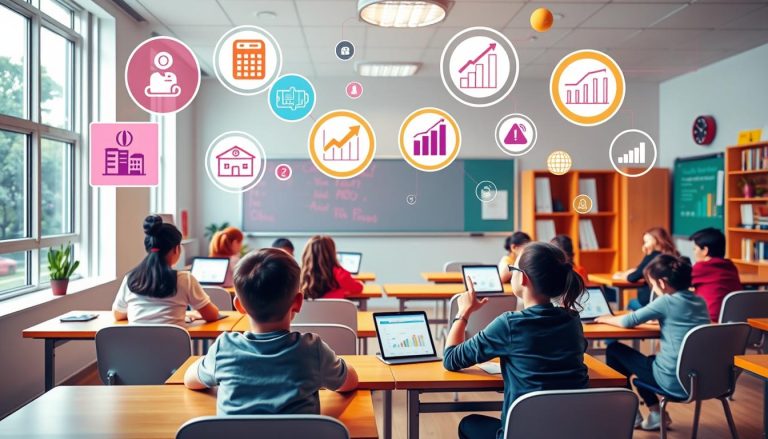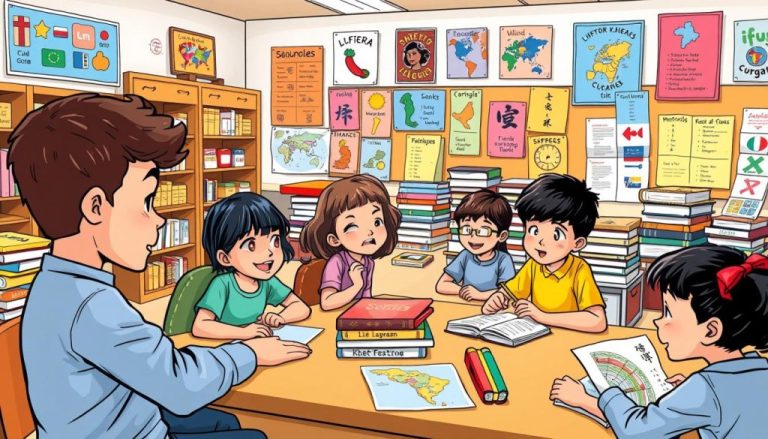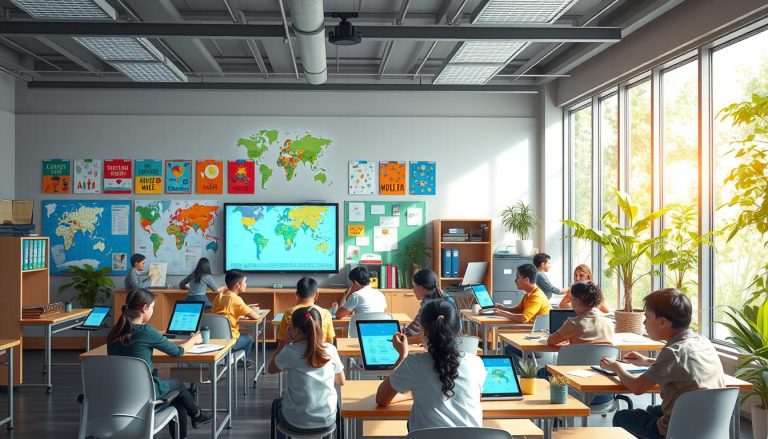Applying International Education Insights Locally
I’ve worked in international education for a long time. I’ve seen how learning across cultures can change lives. Through global classrooms and study abroad, I’ve learned a lot. Now, I’m excited to use this knowledge in my local community.
I’ve found ways to connect international education with local needs. This has helped us understand and value cultural diversity. It’s also made our education more inclusive and fair for everyone. This article will show how I’ve used my experience to make a difference. I want to help all learners become active global citizens.
Key Takeaways
- Applying international education insights can create local impact and foster cross-cultural learning.
- Developing intercultural competence is essential for promoting global citizenship and inclusive education.
- Study abroad experiences and educational exchange initiatives offer transformative learning opportunities.
- Integrating global perspectives into classroom instruction and curriculum can enrich student learning.
- Educational collaboration and knowledge transfer can bridge the gap between global and local contexts.
From Global Classrooms to Local Impact: Applying International Education Insigh
My journey in international education has taken me around the world. I’ve taught in diverse classrooms and designed study abroad programs. These experiences have shown me the power of cross-cultural learning and the impact of educational globalization.
As an educator, I’ve learned a lot from different cultures. Cultural immersion enriches our learning. It helps us see things from new angles and challenge our beliefs. This has shaped my teaching and inspired me to apply global insights locally.
I’ve created study abroad programs to share these insights with my community. These programs allow students to meet peers from other countries. They broaden students’ views and help them appreciate cultural diversity.
I’ve also used my knowledge of international education policy to improve our curriculum. I’ve worked with district leaders to introduce global perspectives. This helps students think critically about their role in the world.
Through these efforts, I’ve seen how knowledge transfer can change lives. By using my global experiences, I’ve made a positive impact in my community. We now understand the world as a more connected place.

“Education is the most powerful weapon which you can use to change the world.”
– Nelson Mandela
Fostering Global Citizenship through Cross-Cultural Learning
Learning from international education, I see how vital global citizenship is. By showing students different cultures and encouraging them to share, we help them understand and appreciate diversity. This way, they grow into people who can connect with the world.
Understanding Cultural Diversity
Today, classrooms are filled with students from all walks of life. It’s key to value this diversity to foster a global mindset. Through talks, presentations, and group work, students learn to see the beauty in various traditions and views.
Developing Intercultural Competence
International education also builds the skill to talk and work with people from different cultures. By having open discussions, students learn to respect and understand cultural differences. This skill helps them succeed in school and become active global citizens.
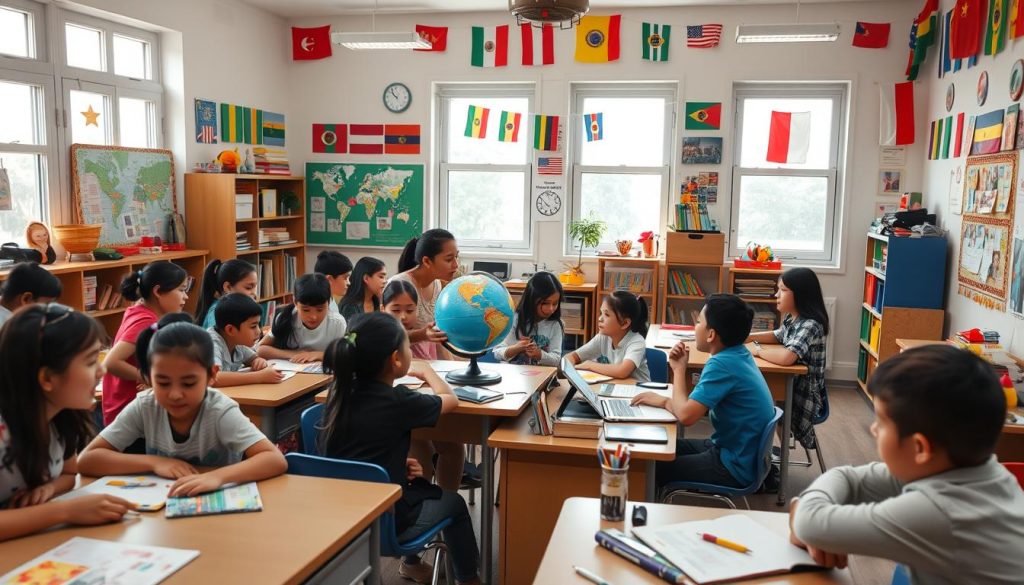
By making classrooms diverse and encouraging cultural sharing, teachers help students become global citizens. This approach makes learning richer and prepares students to tackle the world’s challenges. It helps them make a difference, both at home and abroad.
The Transformative Power of Study Abroad Experiences
As a passionate advocate for global education, I’ve seen the impact of study abroad programs. These experiences change students’ views and spark a love for cultural exchange. They open doors to new perspectives and international collaboration.
My own study abroad journey was life-changing. I lived and studied in a vibrant city far from home. It was a chance to learn a new language, adapt to a new culture, and connect with locals.
“Study abroad is not just an academic pursuit – it’s a transformative journey that broadens your horizons, challenges your assumptions, and ignites a deeper appreciation for the richness of global diversity.”
When I returned home, I wanted to share what I learned. I brought global perspectives into my teaching. This helped my students see the world in a new light.
My students became global citizens through projects and virtual exchanges. They gained a deep understanding of study abroad and global perspectives. These experiences inspired personal growth and fostered cross-cultural understanding.
I’m dedicated to empowering the next generation of learners. I want them to be agents of positive change in our world. By connecting global and local, we can create a better future for everyone.
Integrating Global Perspectives into Classroom Instruction
As an educator, I’ve learned the value of global perspectives in the classroom. By using multicultural teaching and internationalizing the curriculum, I’ve opened my students to different views. This has made our classroom more inclusive and fair.
Multicultural Pedagogy and Curriculum Internationalization
My teaching focuses on multicultural pedagogy. I choose materials that show the diversity of the world. This includes literature, art, and current events from around the globe.
Curriculum internationalization is also key. I add global themes and projects to my lessons. This helps students understand global perspectives and their impact on our lives. It also makes sure all students see themselves in the curriculum, promoting educational equity.
“Integrating global perspectives into the classroom is not just about exposing students to different cultures – it’s about fostering a mindset of curiosity, empathy, and critical thinking that will serve them well in our interconnected world.”
By doing this, I’ve seen big changes in my students. They’re more engaged and aware of the world. Through curriculum internationalization and multicultural pedagogy, they’re learning to be global citizens. They’re ready to make a difference in their communities and beyond.
Bridging the Gap: Educational Exchange and Knowledge Transfer
In my journey through international education, I’ve had the chance to work with schools and teachers worldwide. This has let me learn from the best and share my own knowledge. I’ll talk about how I’ve helped bring global learning to my local community through knowledge sharing and teamwork.
International Collaboration and Academic Mobility
I’ve built strong connections with schools abroad, creating programs for students and teachers to learn together. These efforts have broadened our views and improved our teaching methods and community projects. By joining global research and faculty exchanges, I’ve helped my colleagues use new teaching ideas that fit our needs.
Also, I’ve supported study abroad programs, seeing how they change students. They come back with a new understanding of cultures, better thinking skills, and a love for our connected world. These experiences have helped them grow personally and inspired them to make a difference in their communities.
FAQ
What insights have you gained from your experience in international education?
I’ve learned a lot about the power of learning across cultures. I see how education can change lives and build global understanding. These lessons help me make a difference in my community.
How have you been able to apply global insights to your local context?
I’ve brought global ideas to my community. This way, I’ve helped create a place where everyone can learn together. It’s about understanding and valuing different cultures.
What strategies have you used to cultivate a global mindset and promote intercultural competence?
I focus on creating a space where everyone can learn from each other. This means teaching students about different cultures and helping them communicate across cultures. It’s all about building a community that values diversity.
How have study abroad experiences influenced your approach to education?
Study abroad changed me. It showed me how important it is to see the world from different perspectives. Now, I use these lessons to help students in my community grow and learn.
Can you share strategies for integrating global perspectives into the classroom?
I make sure my classroom reflects the world we live in. By teaching from a multicultural standpoint, I help students see the world in new ways. It’s about creating a space where everyone feels valued and heard.
How have you utilized educational exchange and knowledge transfer to bridge the gap between global and local contexts?
I’ve been lucky to work with educators from all over. These partnerships have helped me share and learn from global education practices. Together, we’re making a difference in our community by bringing the world to our doorstep.

